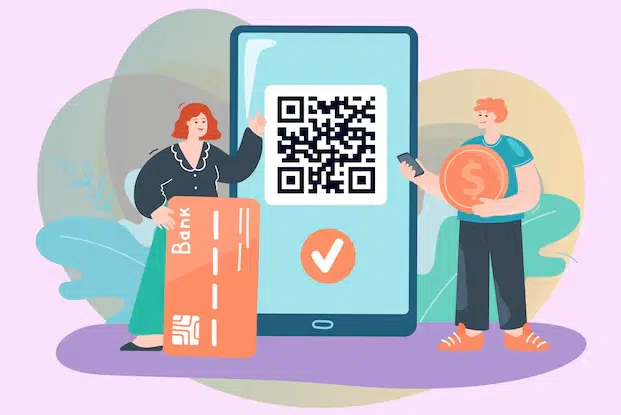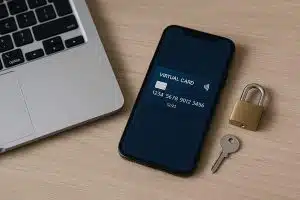In the fast-paced evolution of financial technology in the United States, one particular innovation is leading a quiet revolution: the QR Code. These matrix-barcode patterns are transforming the realm of personal finance and reshaping how Americans think about spending and saving. Whether it’s splitting a bill, paying for groceries, or even investing in the stock market, the ease and convenience of QR Code transactions are making a significant impact. As we delve into this new era of contactless payments, understanding the rise of QR Code use will illuminate how it’s modifying financial behaviors across the nation.
During the past few years, the U.S. has witnessed an explosion in the use of technology-driven payment systems. A significant factor in this surge is the technology that lies at the heart of mobile payments. Faster, smoother, and utterly convenient, QR Code systems have surpassed traditional payment methods, bringing a new level of ease to financial management. As these tendencies solidify, they pave the way for a future where quick responses are not just advantageous but essential. In this piece, we’ll explore how this digital transformation is altering personal finance in the United States.
The rise of QR Code payments

The adoption of QR Code payments in the U.S. can be attributed to several key factors, including their convenience, speed, and security. During a time when contactless payments are highly desirable due to health considerations, QR Code technology stands out as an impeccable solution. The U.S. market has seen rapid acceptance as consumers and businesses alike have embraced this painless payment method. Offering users the ability to effortlessly transfer funds, QR Codes are revolutionizing daily transactions, ranging from shopping at supermarket chains to settling restaurant bills. It’s clear that this technology is here to stay.
What empowers QR Codes further is their simplicity and adaptability. With just a smartphone, anyone can complete a transaction in seconds. There’s no need for complicated hardware or software, which formerly might have been a barrier for smaller retailers. As a result, everything from mom-and-pop stores to larger franchise chains are performing transactions with increased ease. Additionally, QR Codes eliminate the friction of geographic boundaries, offering uniformity in payments that can extend globally. This universality is not only convenient but also a fresh step toward a more connected, seamless global economy.
The role of smartphones in expanding usage
One cannot discuss the expansion of QR Code transactions without mentioning smartphones, which play a pivotal role in this landscape. With a smartphone in nearly every pocket, users have the means to easily scan and complete financial transactions. The wide availability of mobile internet networks further expedites these processes, making QR Code payments accessible anytime and anywhere. This availability has made QR Code usage ubiquitous, merging effortlessly with modern consumer lifestyles and encouraging a shift toward digital financial interactions.
Moreover, the role of smartphone applications in curating and managing these transactions can’t be overstated. Modern apps streamline the user experience, linking directly to other financial services, such as bank accounts and digital wallets. This interconnected system not only supports the convenience of QR Code payments but also contributes to enhanced financial literacy and management. Users can track spending, manage budgets, and even receive insights into their financial habits, providing a comprehensive approach to personal finance through a single, portable device.
Impact on consumer behavior and spending
The shift toward QR Code technology is not merely confined to payment systems; it is profoundly affecting consumer behavior and spending habits. With transactions becoming smoother and more convenient, consumers are more likely to make impulse purchases, increasing overall spending. Studies have shown that the frictionless nature of QR Code payments directly influences shopping decisions, as the speed of the transaction process cuts down on the time consumers have to second-guess their purchases. This behavioral change is reflective of a broader trend toward instant gratification and digital consumerism.
QR Code payments also encourage mindful budgeting among consumers. By utilizing apps that track spending habits, individuals gain better insights into their financial wellness. Many of these apps feature interactive interfaces that make financial management engaging and effective. Users can set limits, receive notifications, and even compare expenses over various time frames, fostering better financial habits. As consumers become more adept at managing their finances through digital tools, the demand for QR Code solutions is only expected to rise, feeding into the cycle of adoption and transformation.
The future of QR Code payments in the US
Looking forward, the trajectory of QR Code payments in the U.S. appears promising as both consumer and merchant adoption accelerates. Innovations are underway to further integrate these codes into more facets of daily life, such as public transit, education, and healthcare. Linking QR Codes to smart contracts and other decentralized ledger technologies could revolutionize how agreements and payments are managed, opening doors to a more decentralized economy that capitalizes on security and transparency.




